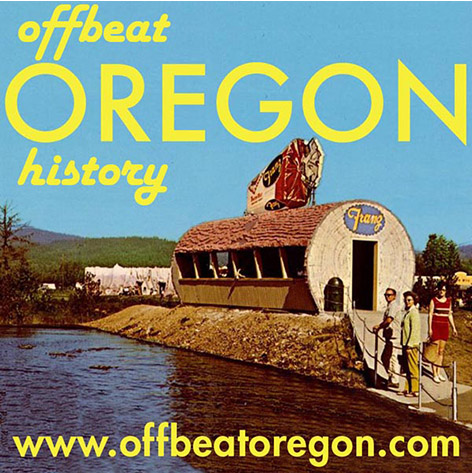
Looking for more?
On our Sortable Master Directory you can search by keywords, locations, or historical timeframes. Hover your mouse over the headlines to read the first few paragraphs (or a summary of the story) in a pop-up box.
... or ...
EASTERN AND CENTRAL OREGON; 1920s:
‘Oregon’s Outback’ a real moonshiner’s paradise
Audio version: Download MP3 or use controls below:
|

Given the size of the sky around Prineville, Braly must have intended this remark to be taken figuratively rather than literally. But the fact is, Eastern Oregon is large, lonely and quiet. In the 1920s, it was also full of high-desert dry-land homesteaders who were hanging on by their fingernails, trying to eke a living out of 320 acres of land that barely had enough forage for a cow or two. For any of these folks lucky enough to have a creek on the claim, Prohibition came just in time. A two-dollar investment in sugar and yeast could pay the bills for a couple months. Local sheriffs and their deputies tried to enforce the law, because that’s what good cops do. The problem was, Eastern Oregon was one of those places in which most folks knew the sheriff. You couldn’t exactly go undercover. And since everybody knew everybody, when a couple state revenue agents came into the area, the word traveled faster than they could. 
A mountain moonshine still on display at the McCreary County Museum in Stearns, Kentucky. The working parts of this still — boiler pot, arm and thump keg — are real working components seized from a moonshiner by the McCreary County Sheriff's Department. The sign on the barrel is a recipe for moonshine. (Photo: Brian Stansberry )Some Eastern Oregon bootleggers did get caught, of course. Braly recounts one case in which state revenue officers busted a group of men working a still on the Metolius River. Before hauling them off to jail, the revenuers had to help the bootleggers round up their sheep. Plenty of stills got found and destroyed during Prohibition. But plenty more remained, faithfully pumping out liquor, until 1933 when the 21st Amendment repealed Prohibition and made them unnecessary. Hundreds of them were simply abandoned in knocked-up shacks deep in the canyons and juniper thickets; from time to time, someone still stumbles across one. (A quick side note about Prohibition Officer McBride: As a prohibition officer, this fellow was clearly either uncommonly unlucky or unsettlingly trigger-happy. Two and a half months after the Bend apartment house was blown up in an attempt on his life, he was back in the papers again; this time, he’d gunned down a moonshiner in a raid near Woodburn. According to his report, the outlaw, a man named John Kaboris, during the liquor raid, charged McBride, firing as he came. McBride shot him dead, and wounded one of the other bootleggers as well.)
|
©2008-2023 by Finn J.D. John. Copyright assertion does not apply to assets that are in the public domain or are used by permission.

